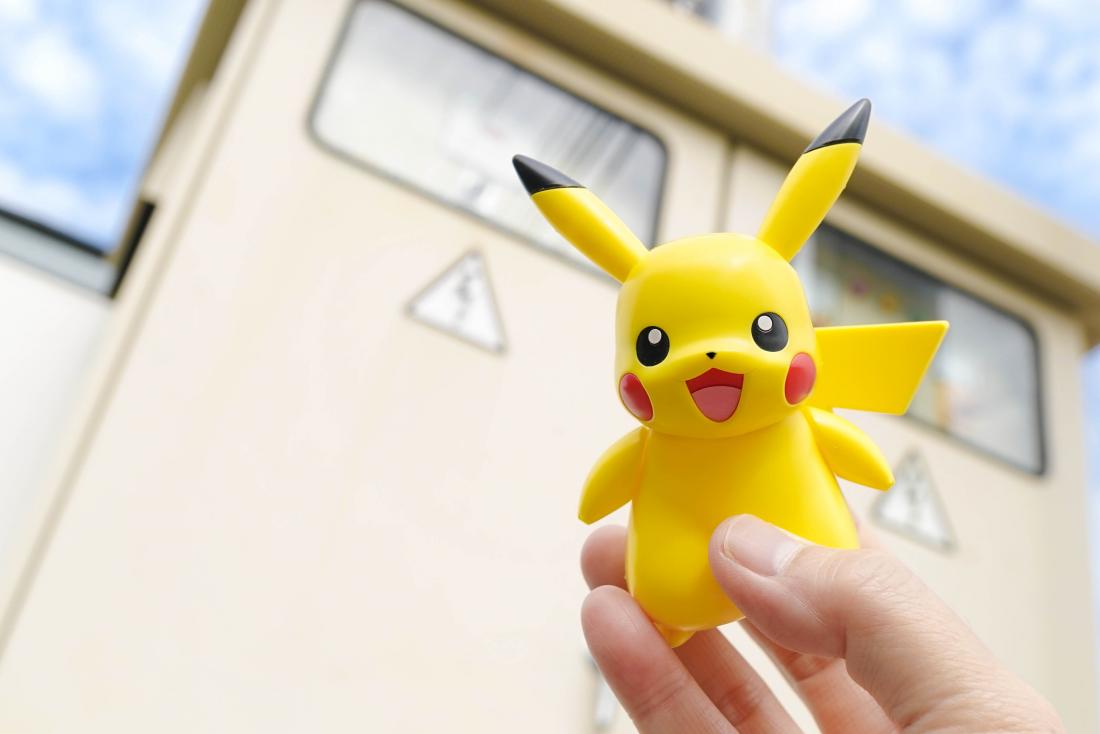
A recent study used Pokémon to inform neuroscience.
Pokémon is a media franchise that dates back to 1995. It involves fictional creatures called “Pokémon.”
Players have to catch and train these creatures to battle one another.
The battles are the main theme of the Pokémon games, and players have to reach certain objectives within the game.
In the ’90s, children as young as 5 were playing Pokémon. Many of them continued to play later versions of the game throughout the years. These games exposed children to the same characters and rewarded them when they won battles or added a new character to the in-game encyclopedia.
Psychologists at Stanford University discovered that this repeated visual stimuli during childhood, combined with the number of hours spent in front of the screen, activates specific regions of the brain.
They have now published their findings in the journal Nature Human Behavior. The results may help shed light on some of the many questions that remain about our visual system.
“It’s been an open question in the field why we have brain regions that respond to words and faces but not to, say, cars,” says first study author Jesse Gomez, former Stanford University graduate student.
“It’s also been a mystery why they appear in the same place in everyone’s brain,” he adds.
The role of eccentricity bias
Recent research in monkeys that scientists from Harvard Medical School in Boston, MA, conducted showed that regions dedicated to a new category of objects tend to develop in the brain during childhood.
Gomez was interested in testing these findings in humans, so he decided to focus on video game exposure. He recalled that when he was a child, he spent countless hours playing video games, especially Pokémon Red and Blue.
Based on previous studies, as well as his own experience with video games, Gomez theorized that if exposure at a young age plays a pivotal role in the development of dedicated brain regions, the brains of adults who played Pokémon as children should respond more strongly to characters in Pokémon than other types of stimuli.
“What was unique about Pokémon,” says Gomez, “is that there are hundreds of characters, and you have to know everything about them in order to play the game successfully. The game rewards you for individuating hundreds of these little, similar looking characters.”
Gomez realized that he had all of the ingredients to test the theory in humans. Pokémon does not just expose children to the same characters repeatedly — it also rewards them after battles. In addition, most children played the games on the same small, square screen.
These factors make the Pokémon experience an interesting way to test so-called eccentricity bias.
The eccentricity bias states that, in the brain, the location and size of a dedicated category region depends on two main factors: “how much of our visual field the objects take up,” and whether the image occurs in our central or peripheral vision.
The tiny screen that people used to play Pokémon games means that they would only take up a very small part of the gamers’ field of view.
Following the eccentricity bias theory, the preferential brain activations for Pokémon should be present in the central part of the visual cortex, the brain area that processes what we see.
Extensive experience activates brain regions
The researchers recruited 11 adults who had played Pokémon extensively when they were younger; Gomez himself also took part in the experiment. The participants all underwent an MRI scan.
The researchers showed hundreds of Pokémon characters. As expected, the brains of those who played Pokémon as children responded more to the images than those who had not played the game as children.
“I initially used the Pokémon characters from the Game Boy game in the main study, but later I also used characters from the cartoon in a few subjects. […] Even though the cartoon characters were less pixelated, they still activated the brain region.”
Jesse Gomez
Cconsistent among participants was the site of the brain activations for Pokémon: an area located behind the ears called the occipitotemporal sulcus. It seems that this region might normally respond to images of animals — and Pokémon characters are animal-like.
“I think one of the lessons from our study,” says Prof. Kalanit Grill-Spector, of Stanford University’s School of Humanities and Sciences, “is that these brain regions that are activated by our central vision are particularly malleable to extensive experience.”
She adds that the brain is a master improviser. It can create new activations dedicated to Pokémon characters, but it follows specific rules in the process. One refers to where these activations take place.
Prof. Grill-Spector also notes that for parents who might look to this study as evidence that video games leave a lasting mark on the brain, they should consider that the brain is capable of containing many different patterns — not just video game characters.
